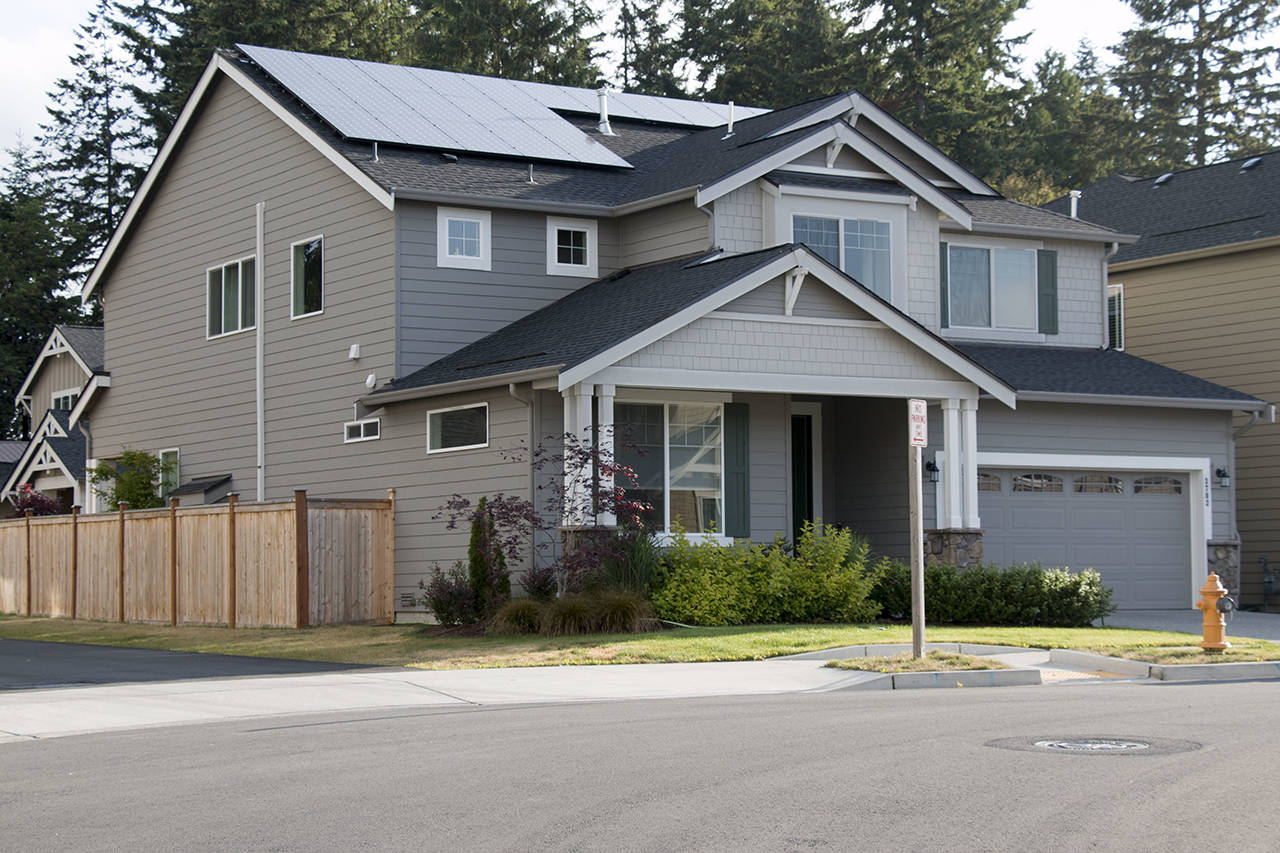By Snohomish County PUD
In the Northwest, February can seem like a strange time to talk about the sun. But for homeowners in the Puget Sound region, solar power is hot every month of the year.
As the cost of equipment comes down, purchasing and installing a photovoltaic (PV) system is becoming more affordable. With federal income tax credits still available and net metering helping customers offset their electricity consumption, solar power can be a no-brainer for many customers.
But that doesn’t mean there aren’t drawbacks for customers attempting to install a PV system. The upfront costs can be expensive, solar panels on their own won’t power your home in a power outage and not every customer’s roof or yard can accommodate a successful PV system.
The PUD strongly supports solar power. We have always helped customers find quality contractors through our registered solar contractor directory and interconnect their systems to the grid. In 2019, the PUD built the largest community solar program in the state to help customers who couldn’t take advantage of solar power in the past gain access to the benefits of the sun.
For the PUD, solar generation is a win-win. It’s a clean, renewable power source that can help ease stress on the grid during periods of peak demand.
There’s a lot to think about before installing a PV system on your home. Here’s a few things to know and some tips:
Net metering: The state’s net-metering policy allows customer-generators, or those who have installed a PV system on their home or property, to offset their electricity consumption with energy production on an annual basis. It doesn’t mean that you’ll never see a PUD bill again. Customers who produce more energy than they consume within a given bill period will have that net excess generation monetized and banked in a net-metering reserve. Conversely, customers who use more energy than they produce will pay the PUD the net amount on their next bill. Note: Solar customers, regardless of monthly production and net metering, pay 53 cents per day for other services provided by the utility.
Tax incentives: It’s important to know what tax incentives are available for customers thinking about installing a PV system. Currently there are just two tax incentives still available in Washington: The Washington state sales tax exemption, on systems that generate up to 100 kilowatts, and the federal investment tax credit, which is equal to 26 percent of the system price and is available through 2022, at which point the rate steps down. The Washington State Production Incentive Program is no longer accepting new applications. The PUD advises customers talk to tax professional before purchasing a PV system.
Solar installers: Just like working with any contractor, customers need to do their homework before settling on a solar installer. The PUD strongly recommends customers talk to multiple solar installers and obtain three quotes to get competitive pricing on an install. Don’t feel pressured to make a quick decision or accept the first bid. The PUD maintains a list of registered solar installers on its website at snopud.com/solaroptions, and the nonprofit solar education organization Solar Washington has resources at www.solarwa.org/consumer_resources.
Evaluate your usage: Before contacting a solar installer, customers should sit down with their PUD bills and figure their usage over the past year. Once they know how much energy their home and property average each month, customers can tailor the size of their photovoltaic system to maximize their investment. Customers can call Customer Service at 425-783-1000 to get a clear picture of their energy usage.
Interested in installing solar? To find out more about PV installations, contact the PUD at 425-783-1700.
Talk to us
> Give us your news tips.
> Send us a letter to the editor.
> More Herald contact information.

























